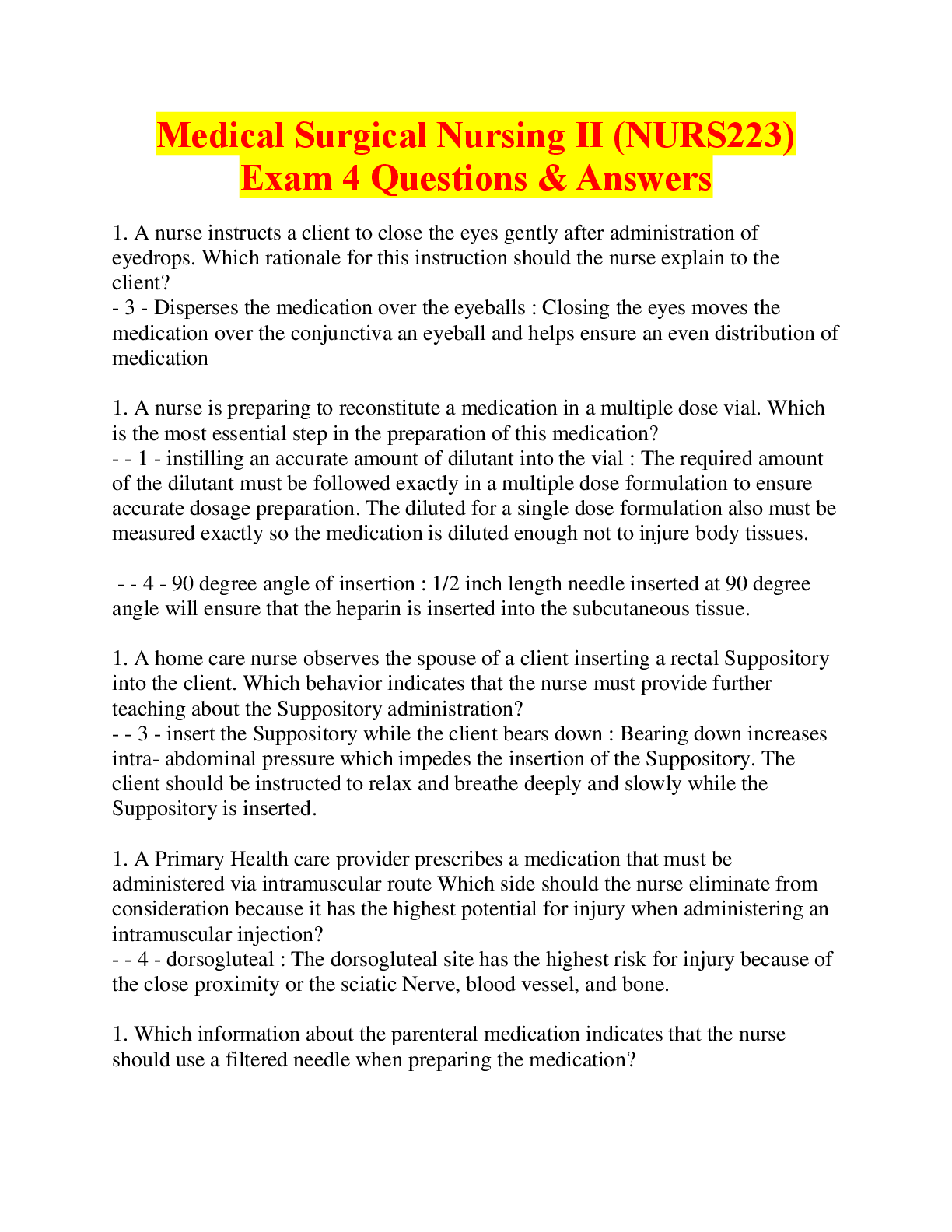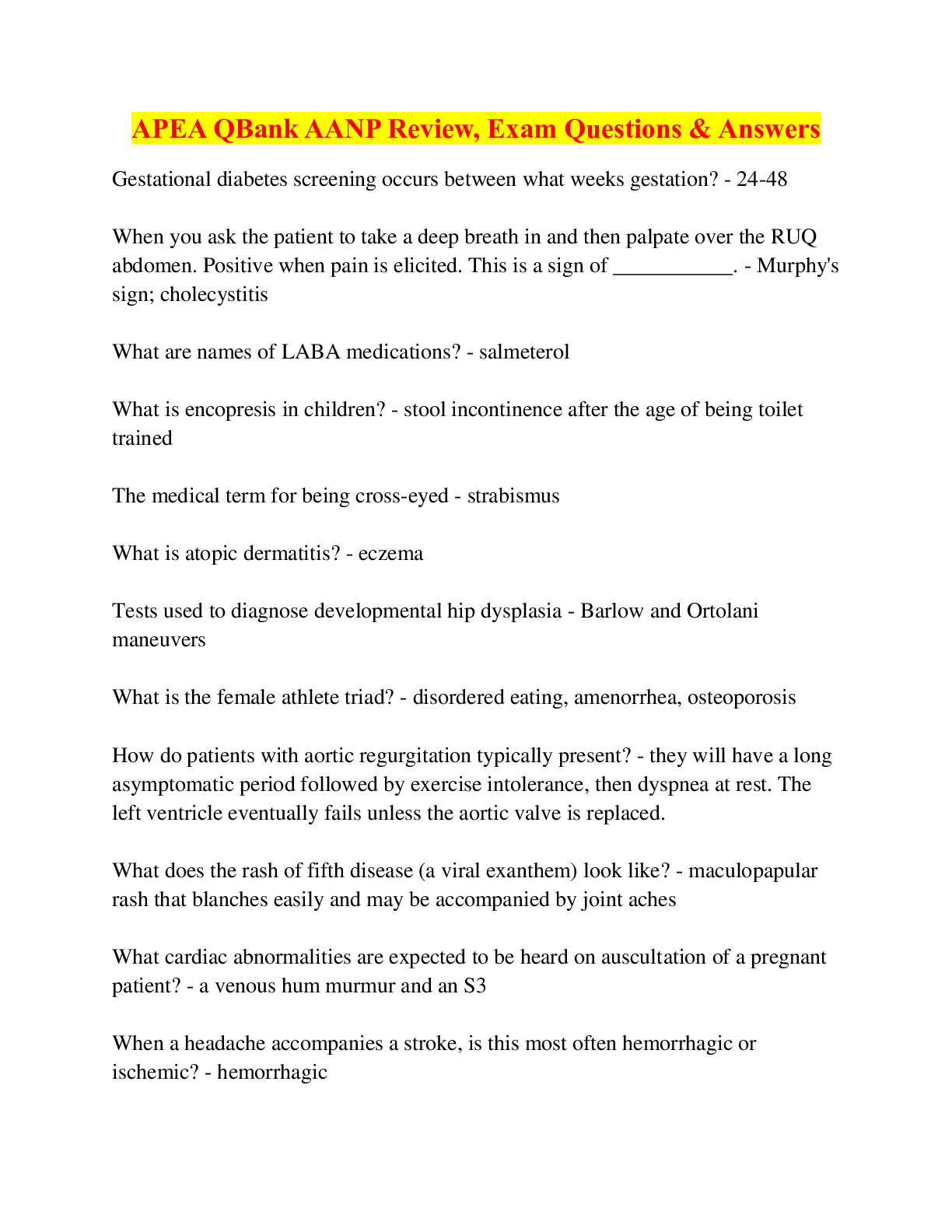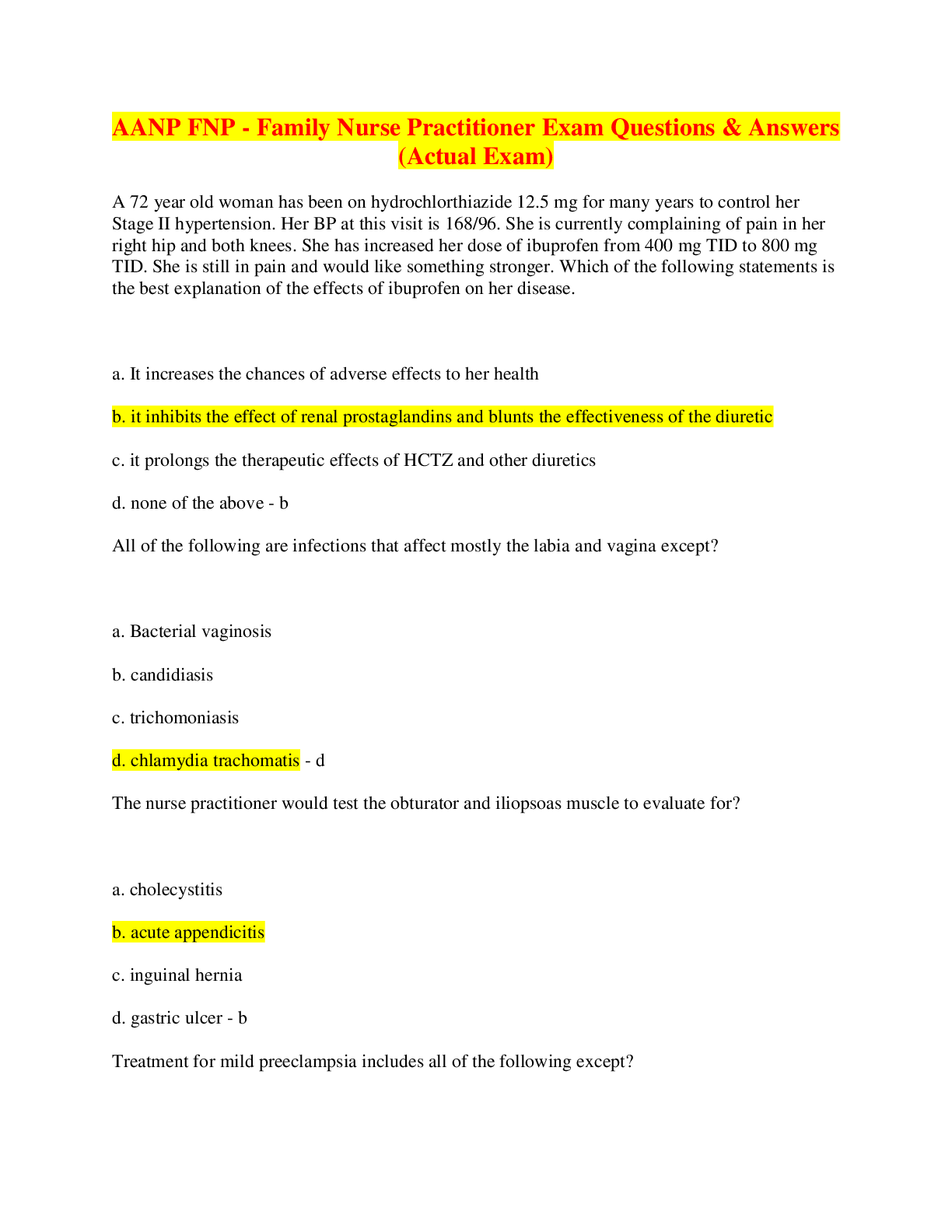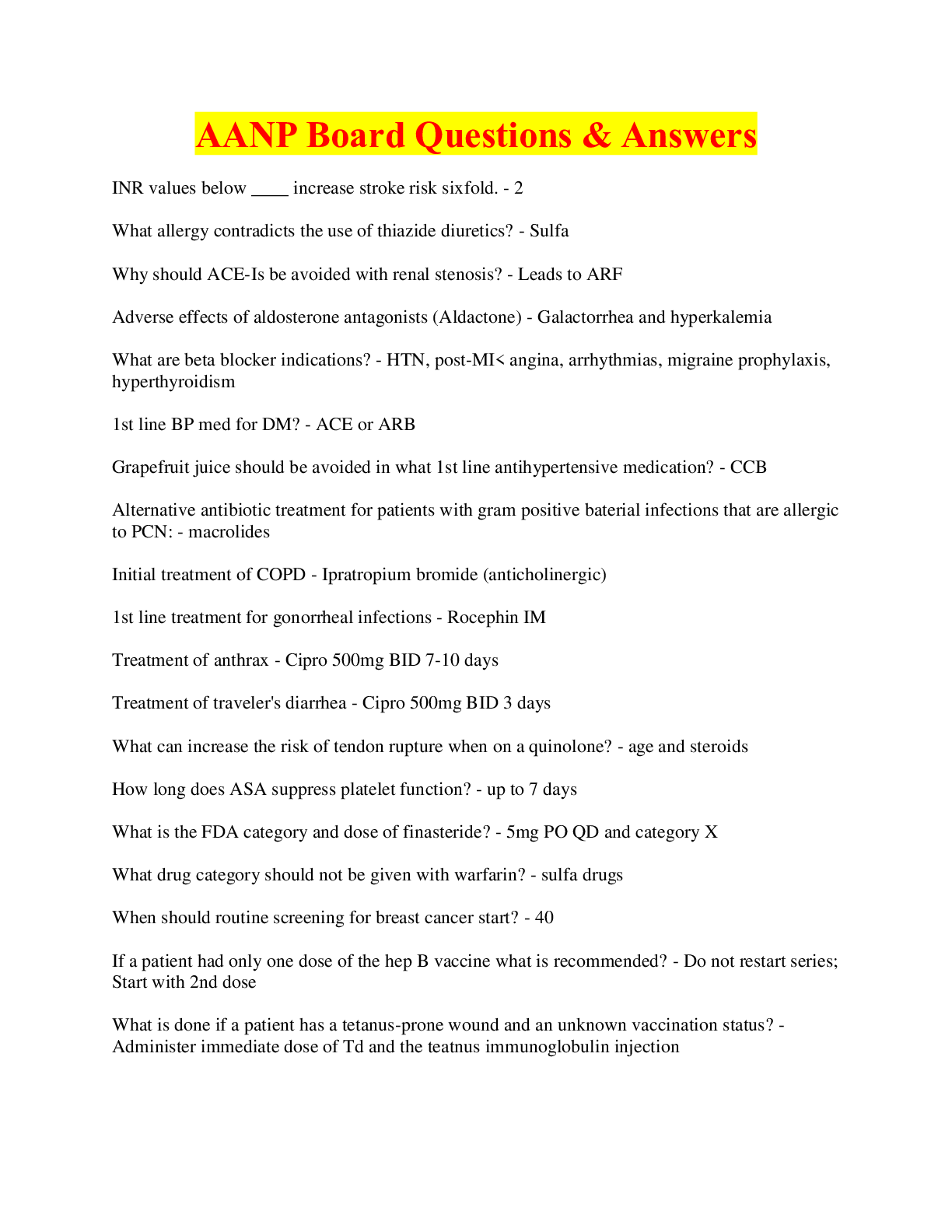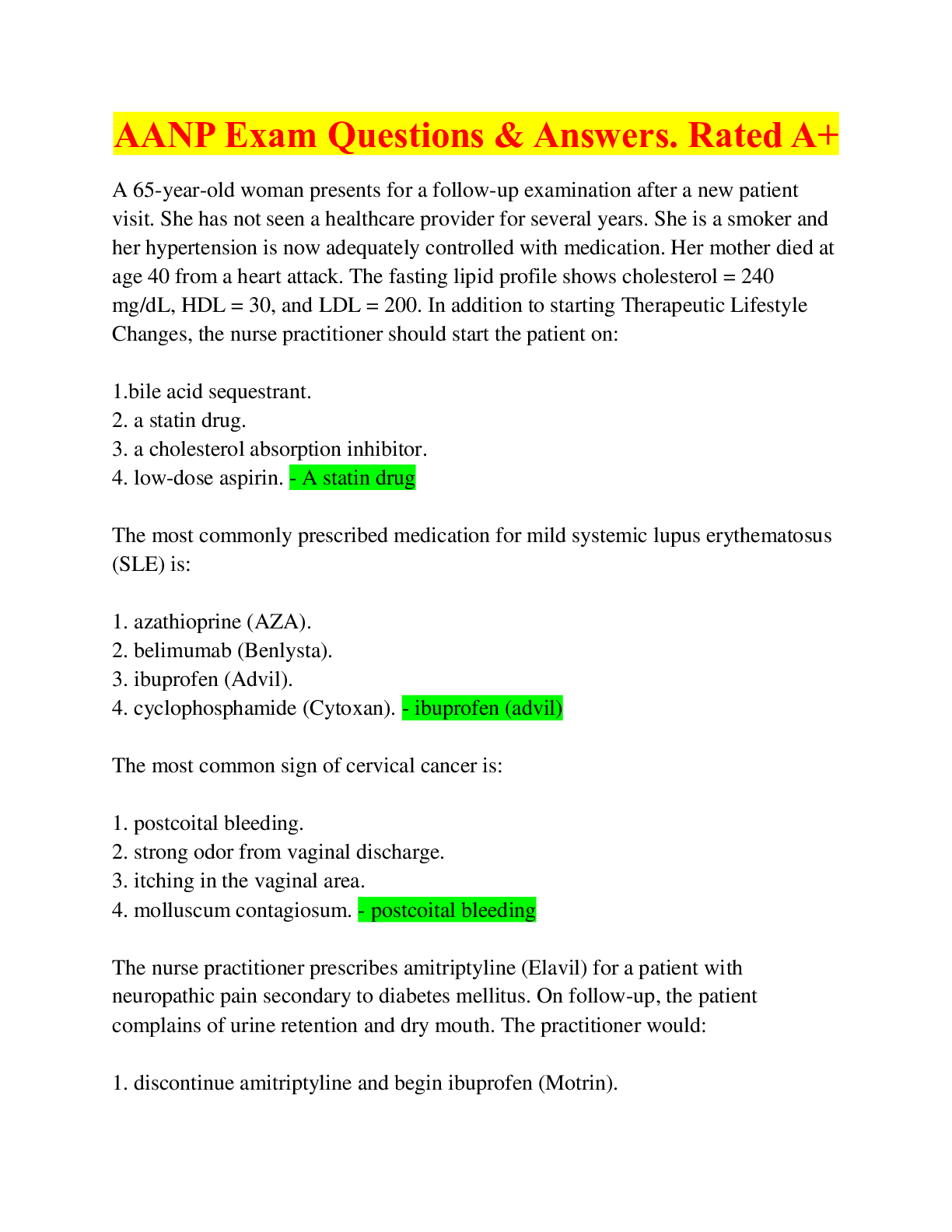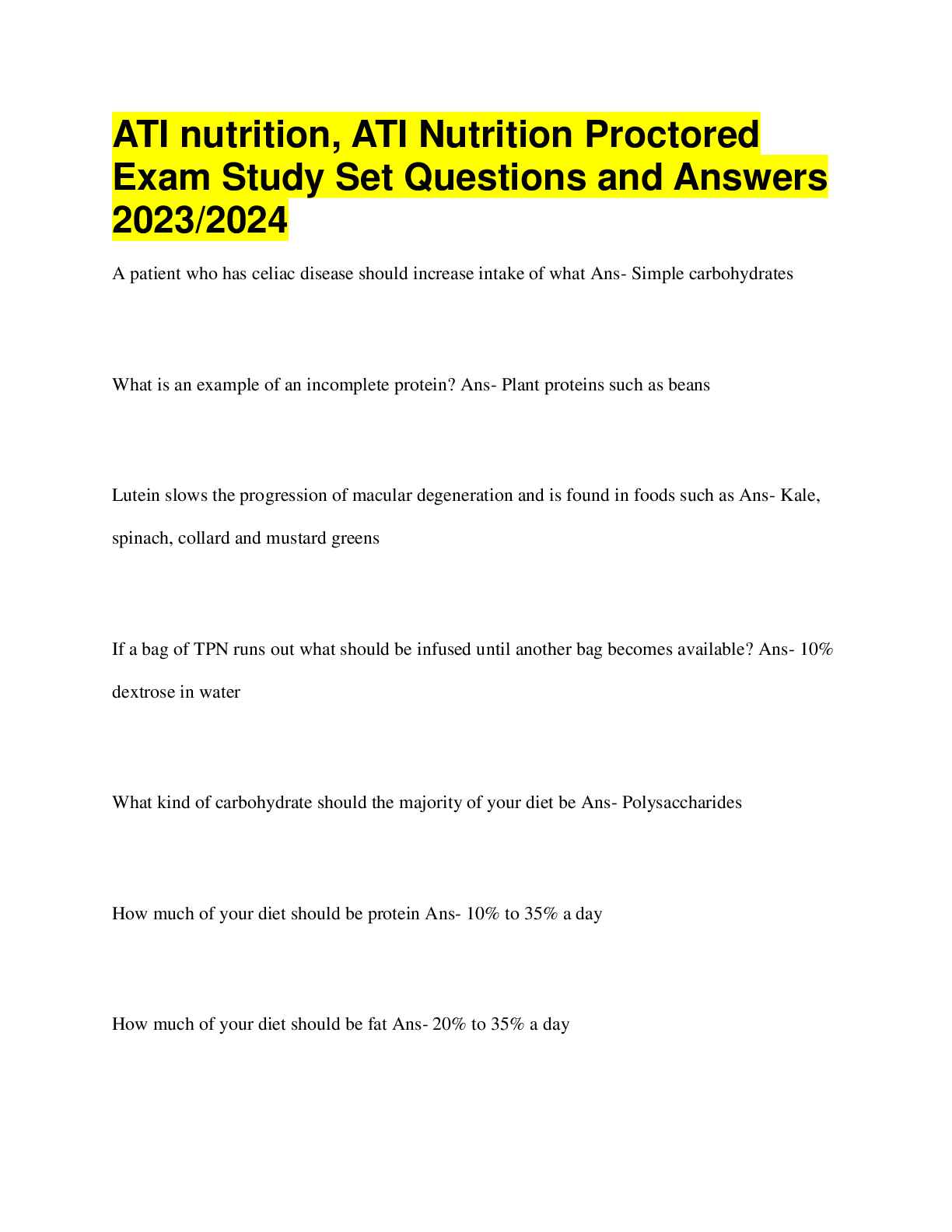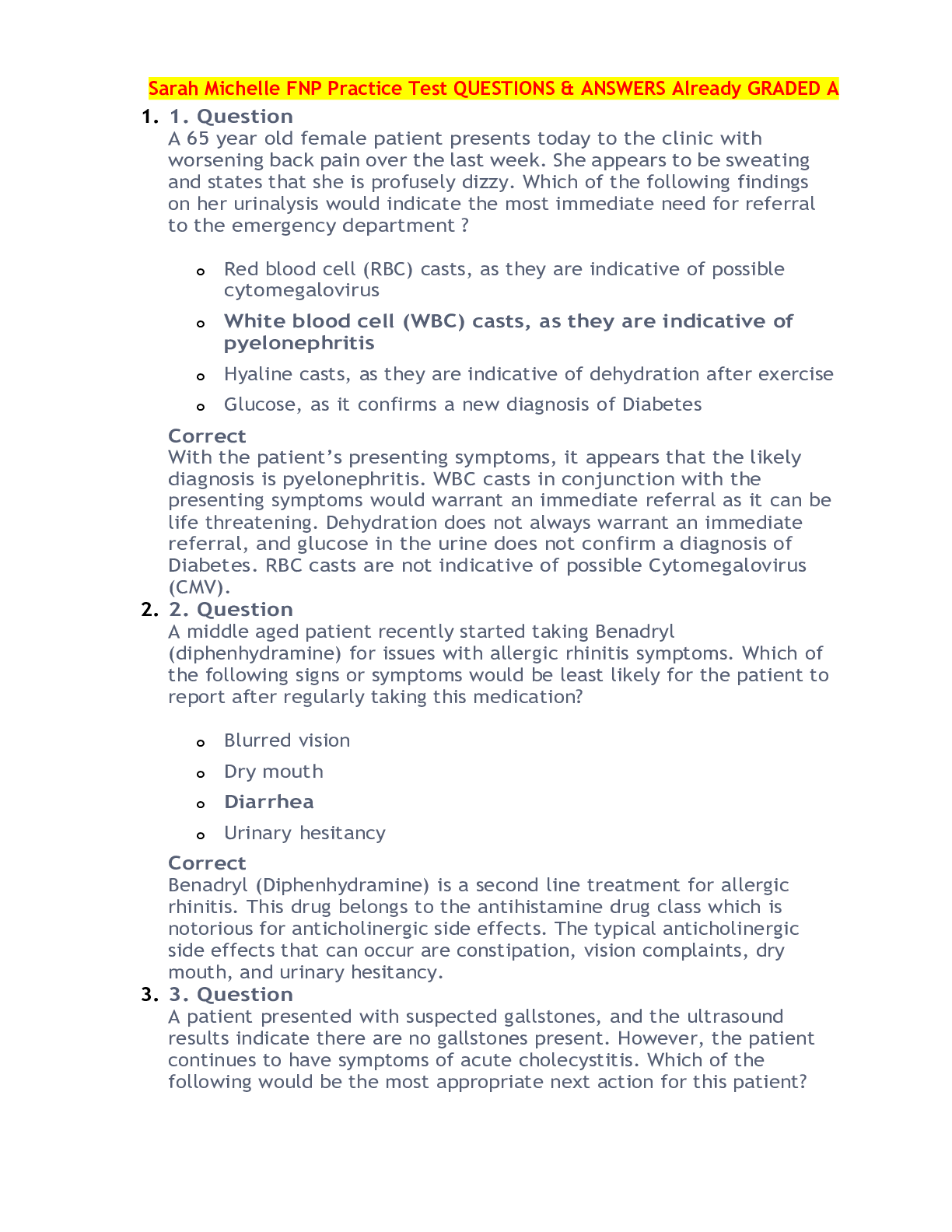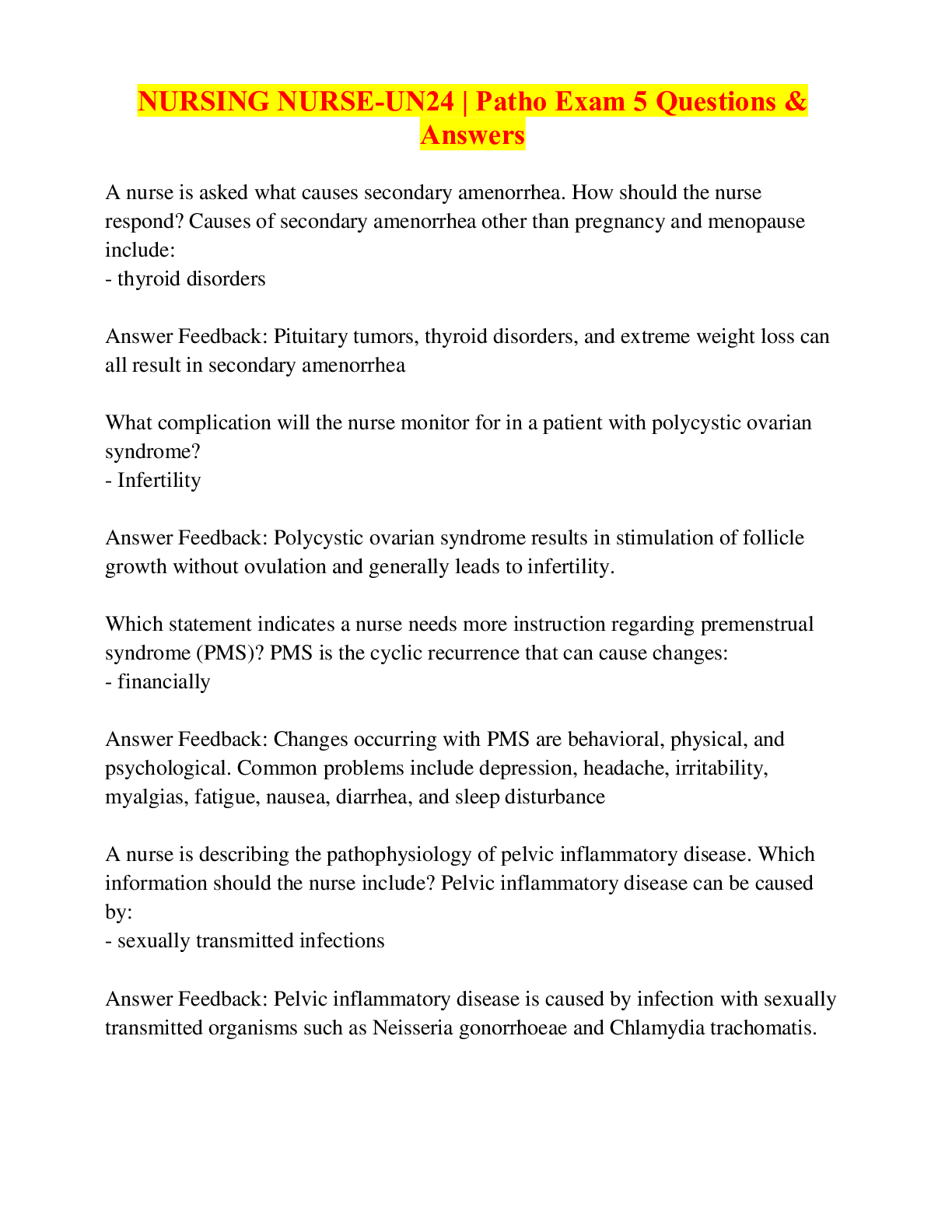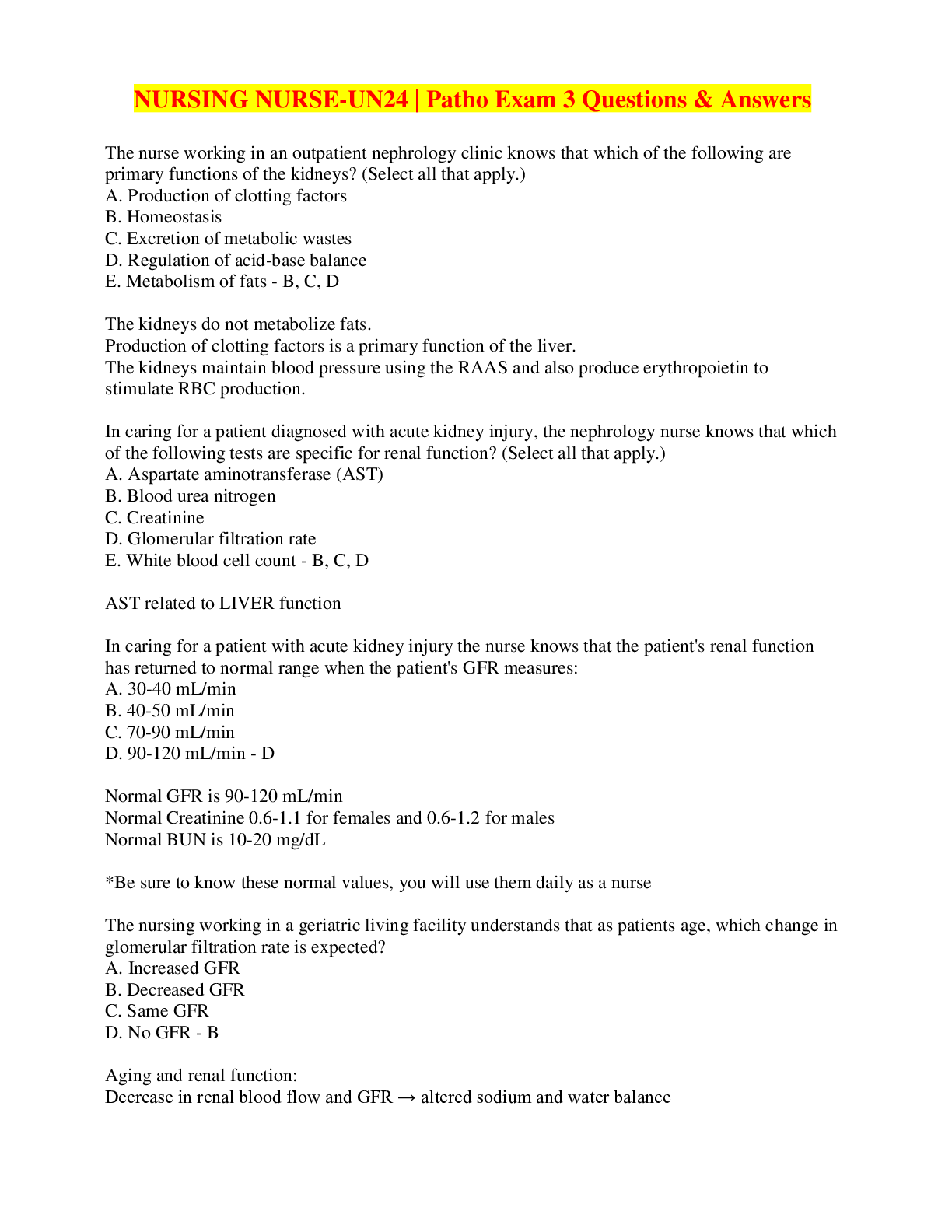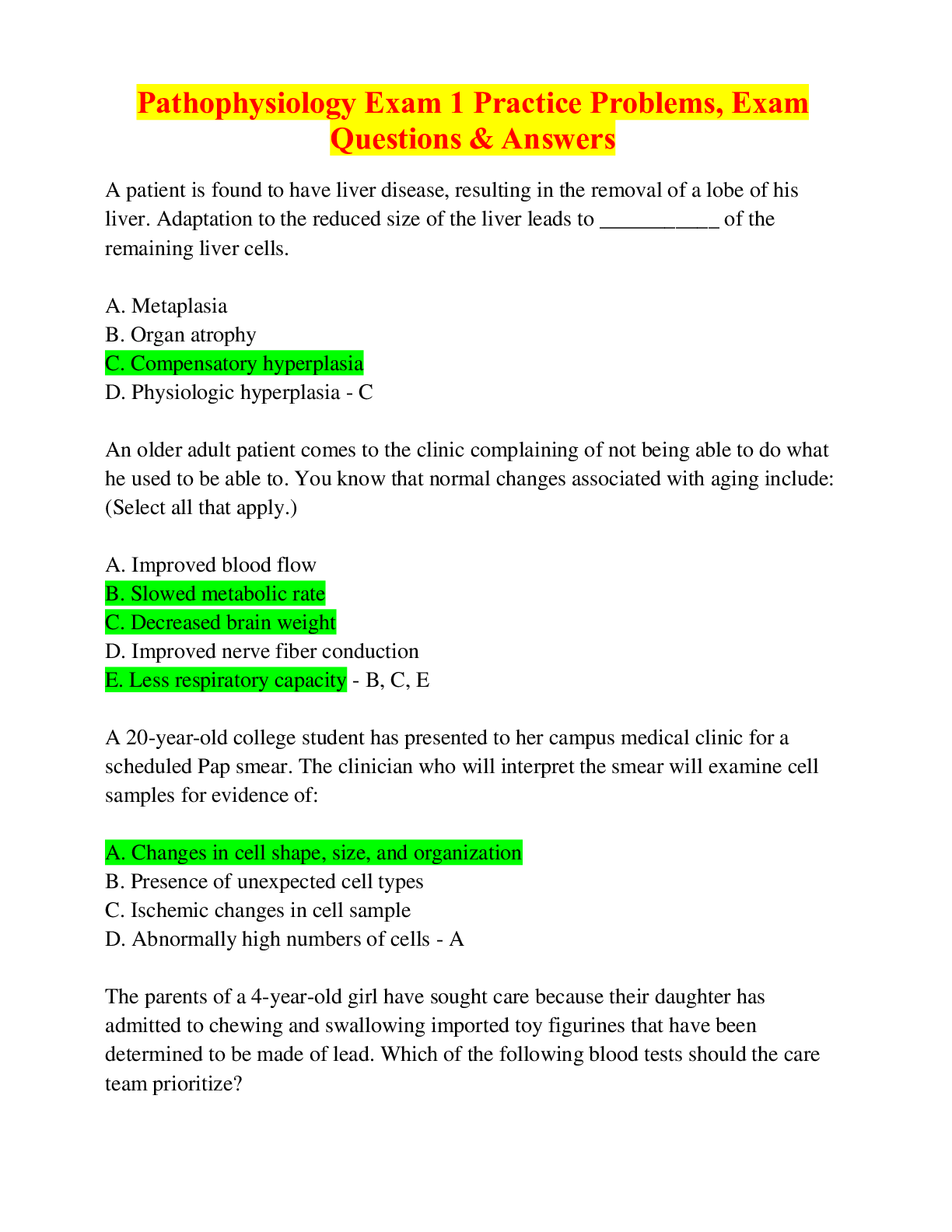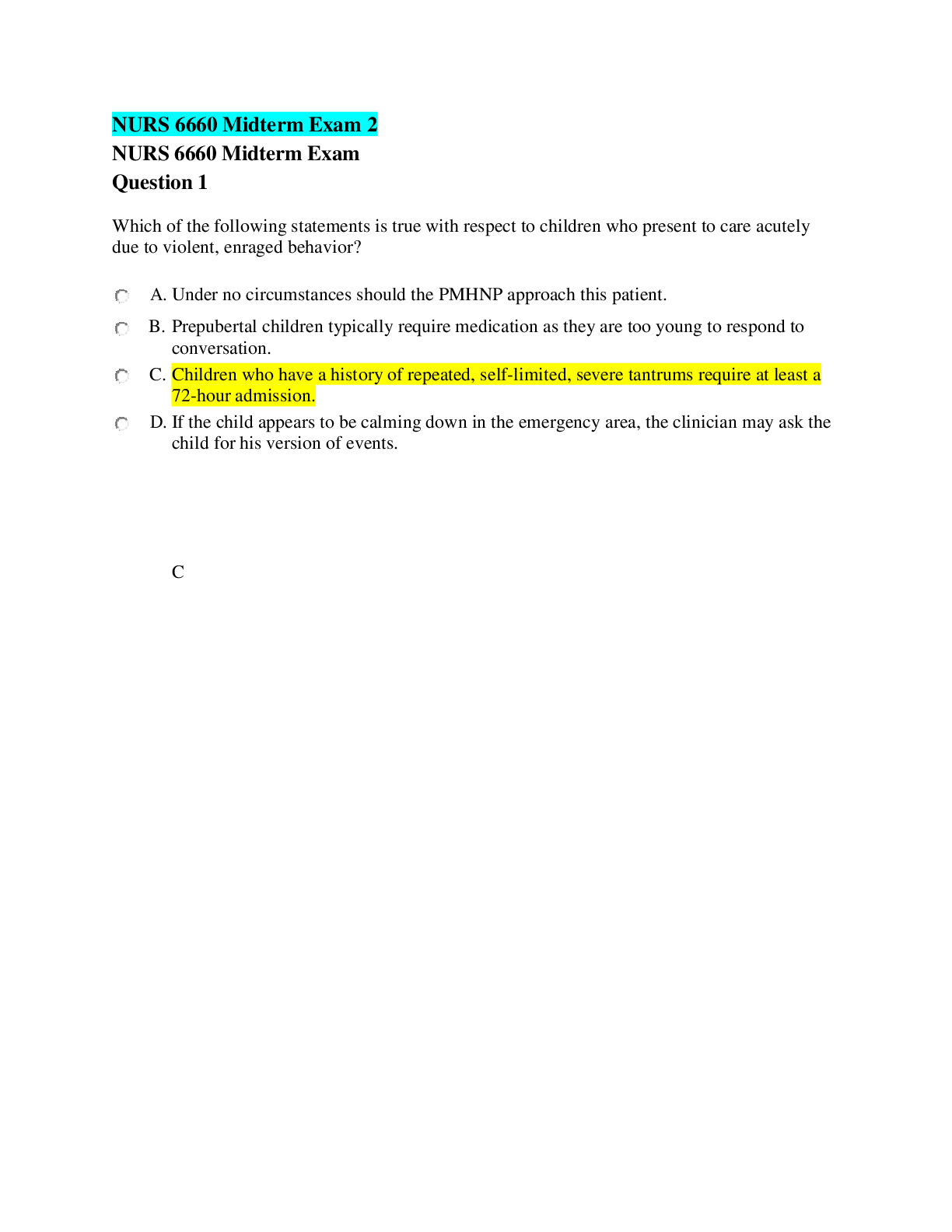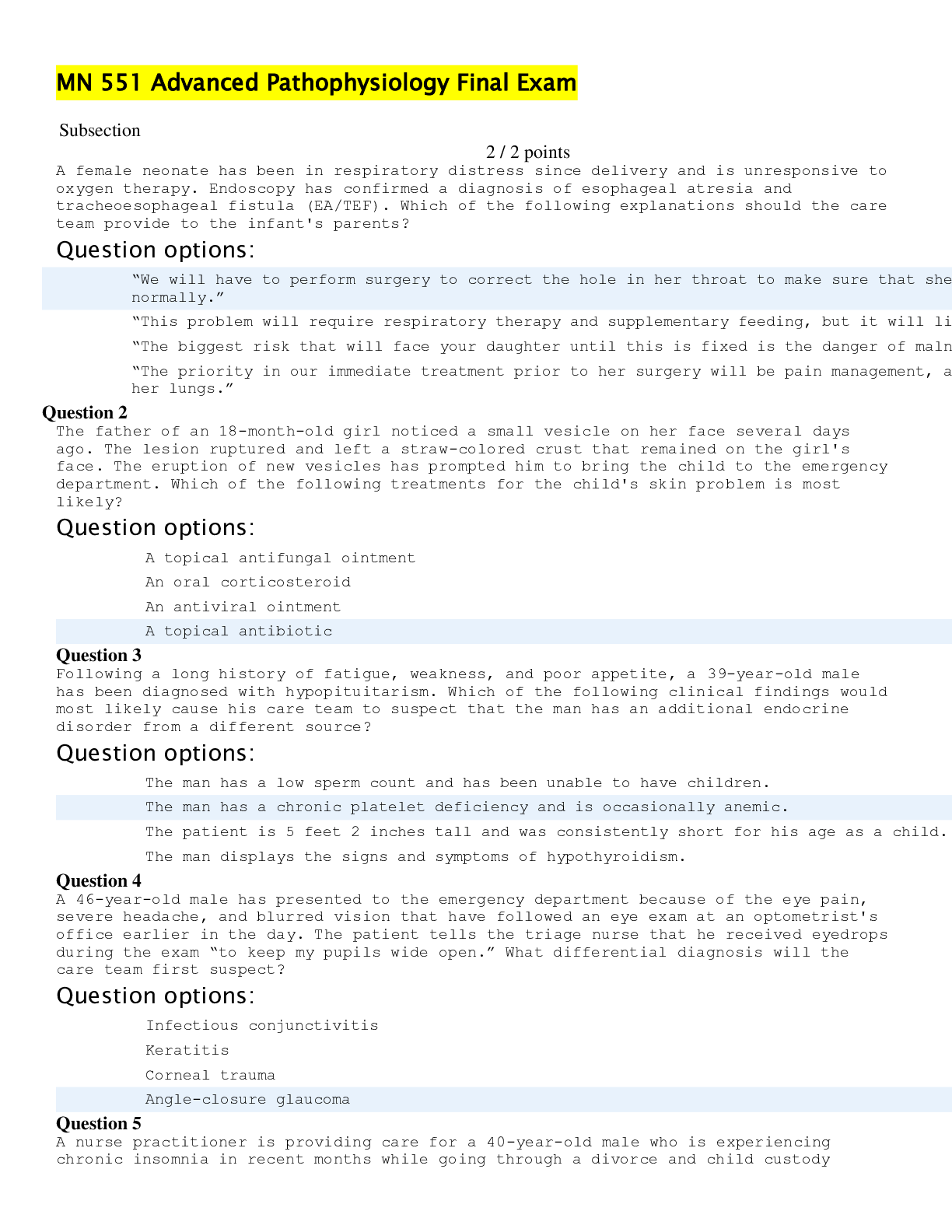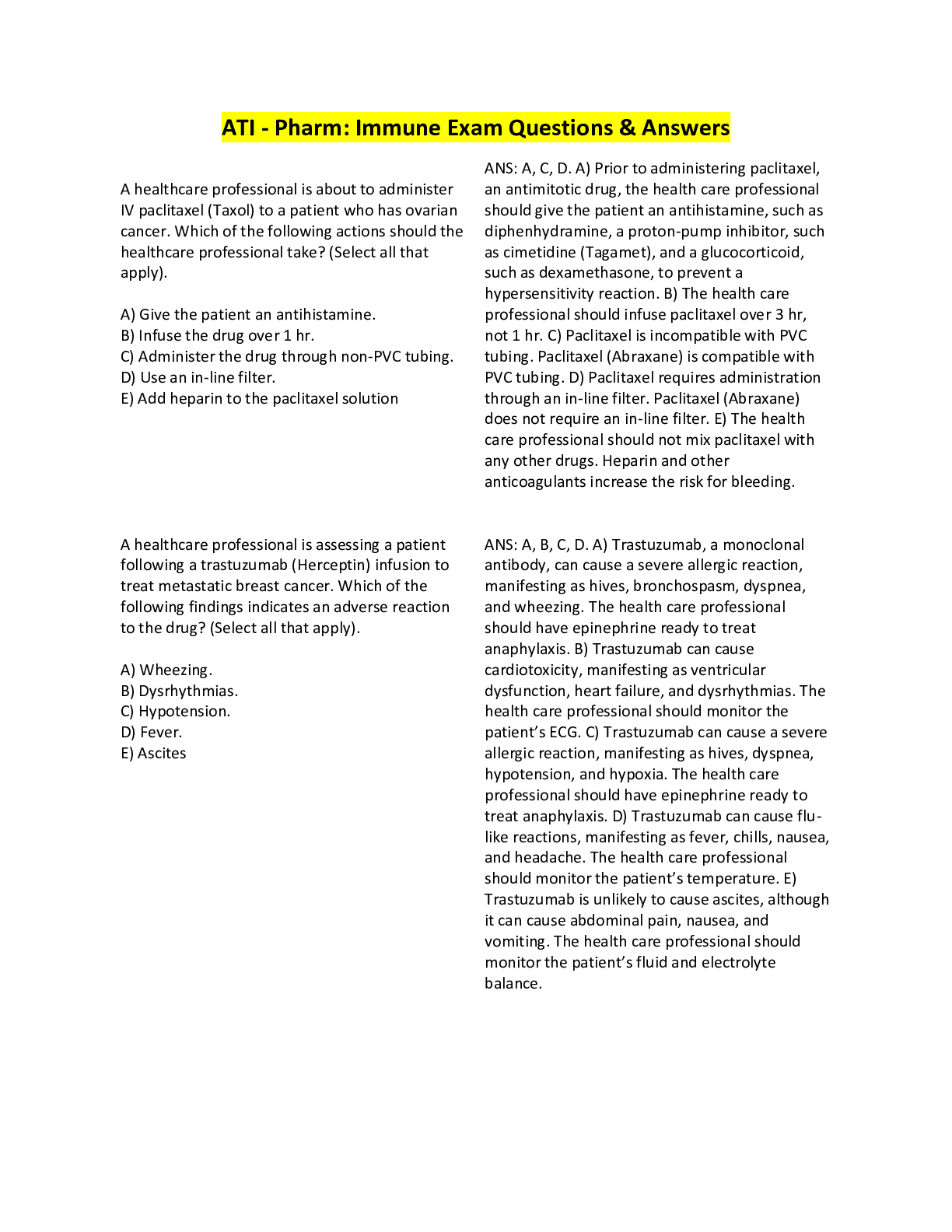NBCOT Exam Questions & Answers, NBCOT, Rated 100%
Document Content and Description Below
NBCOT Exam Questions & Answers, NBCOT, Rated 100%-Entry into the early intervention system begins with which of the following? A. Screening for developmental delay B. Individualized Family Service P... lan C. Screening for family environmental risk factors D. Individualized Education Plan (IEP) - A. A family is referred for an early intervention screening at which a developmental therapist or OT screens the child to determine if a full assessment is necessary. (Pediatric Occupational Therapy and Early Intervention by Case-Smith) In the assessment phase of early intervention, an OT assesses the daily living skills of an infant. In the context of early intervention, the areas that are being assessed are: A. Feeding and sleeping patterns B. Play and leisure patterns C. Motor development patterns D. Sensory development patterns - A. Daily living skills in infants refer to self-sustaining skills, such as feeding and sleeping. Sleep patterns can be evaluated from the parent's description of a typical day. Daily living skills also refer to bathing and dressing, but this is as it involves the parents. (Pediatric Occupational Therapy and Early Intervention by Case-Smith) An assessment team in early intervention has completed an evaluation of a toddler. In compiling the Individualized Family Service Plan, the goals should be determined by the: A. Service coordinator for the case B. Therapists from each discipline C. Reimbursing agency D. Parents - D. Although therapists suggest goals based on the evaluation process, ultimately a child's parents decide which goals will be included and which goals are a priority. Goals that relate specifically to the family's concerns about the care of their child are included in the plan. If therapists have other goals, these can be added with parental consent. (Pediatric Occupational Therapy and Early Intervention by Case-Smith) In early intervention there are different types of risk factors. A child with Down syndrome is an example of: A. Biological risk B. Environmental risk C. Established risk D. Recurring risk - C. Children with known chromosomal, structural, or metabolic defects are classified as having established risk. (Pediatric Occupational Therapy and Early Intervention by Case-Smith) The parent of a child that is being treated in therapy describes how the child covers their ears when riding in the car with the windows down. The parent does not understand why the child persists in this behavior. The OT explains that this behavior could be the result of: A. Sensory defensiveness B. Gravitational insecurity C. Underresponsiveness D. Aversion to movement - A. A child experiencing sensory defensiveness has a tendency to respond negatively to sensation that is considered by most people to be noninvasive or nonirritating. This frequently includes hyperresponsiveness to light or unexpected touches, high-frequency noises, certain visual stimulation, or certain smells and tastes. (Sensory Integration: Theory and Practice by Bundy) An OT is using the Peabody Developmental Motor Scales to evaluate a child. The therapist is assessing the child's: A. Performance of tasks that support school participation B. Visual perception skills in community settings C. Gross and fine motor skills D. Performance in everyday tasks - C. The Peabody assesses a child's abilities with gross and fine motor skills. (Occupational Therapy for Children by Case-Smith) A patient diagnosed with insulin dependent diabetes mellitus is referred to occupational therapy for splinting. A primary area that must be assessed before prescribing a splint is: A. Edema B. Sensation C. Pain D. Fine motor manipulation - B. Persons with long-standing diabetes frequently have increased incidences of other conditions, such as peripheral neuropathies. Therefore, a sensory evaluation is necessary to determine if sensation is diminished. A person with diminished sensation secondary to peripheral neuropathy may not be able to perceive or gauge pressure when wearing a splint. This can lead to skin breakdown. (Introduction to Splinting: A Clinical Reasoning & Problem Solving Process by Coppard and Lohman) An OT is asked to administer a test to a child and compare the assessment results or scores to the sample population of children that have similar characteristics as this child. The BEST type of evaluation to administer would be: A. Criterion-referenced test B. Norm-referenced test C. Skilled observation D. Checklist - B. A norm-referenced test is developed by giving the test in question to a large number of children, usually several hundred or more. This group is the more normative group and norms or averages are derived from this sample. When a norm-referenced test is administered, the performance of the child being tested is compared to the normative sample. (Occupational Therapy for Children by Case-Smith) [Show More]
Last updated: 7 months ago
Preview 5 out of 29 pages

Loading document previews ...
Buy this document to get the full access instantly
Instant Download Access after purchase
Buy NowInstant download
We Accept:

Reviews( 0 )
$13.50
Can't find what you want? Try our AI powered Search
Document information
Connected school, study & course
About the document
Uploaded On
Dec 30, 2024
Number of pages
29
Written in
Additional information
This document has been written for:
Uploaded
Dec 30, 2024
Downloads
0
Views
9

